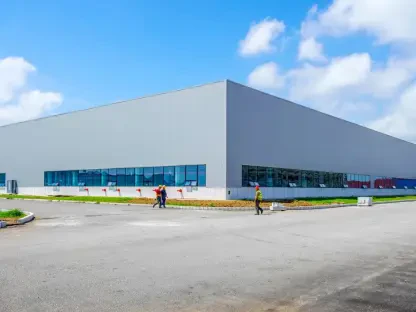In today’s fast-paced business environment, effective inventory management is crucial for maintaining competitiveness and operational efficiency. The integration of data science techniques into Enterprise Resource Planning (ERP) systems has revolutionized inventory management, enabling businesses to make data-driven decisions that enhance accuracy and efficiency. This article explores how data science is transforming inventory management within modern ERP systems, highlighting key benefits and applications.
The Importance of Accurate Demand Forecasting
Accurate demand forecasting is essential for maintaining optimal inventory levels. Traditional methods often rely on intuition and historical data, which can be prone to errors. Data science eliminates these uncertainties by leveraging advanced algorithms and machine learning to analyze vast amounts of data. ERPs like SAP Business One can swiftly process historical sales data to identify market trends and seasonal patterns, leading to more precise demand predictions.
Machine learning capabilities in modern ERP systems further enhance the accuracy of demand forecasts. These systems continuously learn from new data, improving their predictions over time. This ensures that businesses consistently stock the right products in the right quantities, reducing the risk of overstocking or stockouts. By advancing beyond human limitations and integrating complex data points, these systems significantly bolster inventory planning accuracy.
Such precise demand forecasting allows businesses to not only meet customer demands promptly but also optimize their inventory to balance costs. The increased dependability on data science aids in minimizing errors, which positively impacts overall business productivity. Furthermore, by reducing reliance on guesswork, companies can allocate resources more efficiently and enhance operational bandwidth, positioning them to respond proactively to market changes.
Real-Time Inventory Tracking
Real-time inventory tracking is another significant advantage of integrating data science into ERP systems. Traditional inventory management often involves manual checks and communication between different branches, which can be time-consuming and error-prone. Modern ERPs facilitate real-time tracking by integrating with sensors and IoT devices, providing instant visibility into inventory levels across multiple locations.
This real-time data collection and processing enhance transparency and accuracy. Businesses can quickly identify discrepancies, such as pilferage or outdated information, and take corrective actions. This level of visibility ensures that inventory levels are always up-to-date, reducing the risk of stockouts and improving overall supply chain efficiency. Enhanced transparency stands at the forefront of maintaining a seamless supply chain, fostering trust and reliability in customer and supplier relationships.
In addition, real-time inventory tracking equips businesses to respond dynamically to shifting demand patterns and unforeseen disruptions. The instantaneous access to current data points means that inventory managers can make informed decisions swiftly. Real-time tracking also reduces overreliance on periodic physical audits, cutting down labor costs and freeing up human resources for more value-added tasks. The culmination of these benefits manifests in a lean, agile, and highly responsive inventory management system.
Optimal Stock Replenishment
Maintaining appropriate stock levels is crucial for minimizing warehousing costs and ensuring product availability. Data science plays a pivotal role in achieving consistently optimal stock replenishment. ERPs can analyze consumption patterns, supplier lead times, and other relevant factors to determine the ideal time for restocking. The analytical prowess of data science empowers businesses to balance supply against demand adeptly.
Automated restocking notifications or purchase order generation further streamline the replenishment process. This reduces the need for manual intervention and ensures timely restocking, preventing costly overstock or understock scenarios. By optimizing stock levels, businesses can reduce warehousing costs and improve cash flow. Timely replenishment of stock translates directly into reduced holding costs, optimizing capital investment across the board.
In the shifting landscape of business technologies, the automation of replenishment processes marks a significant milestone. Such automation not only fortifies inventory management strategies but also relieves enterprises from the operational clog of manual planning. As supplier variability and consumption trends evolve, the system dynamically adapts, fostering a resilient supply chain immune to the adversities of market flux. With data-driven restocking strategies, companies are better equipped to maintain harmony between supply chain agility and financial prudence.
Efficient Warehouse Management
Efficient warehouse management is essential for minimizing operational costs and improving productivity. Data-driven ERP systems offer several advantages in this regard. Integrated sensors and IoT devices can create “heatmaps” of warehouse activity, highlighting high-traffic zones and optimizing inventory placement. Such technologically augmented insights inject precision and efficacy into warehouse layouts and processes.
This data-driven approach minimizes retrieval times and labor costs by ensuring that frequently accessed items are stored in easily accessible locations. Additionally, data science helps track volatile items to prevent losses from spoilage and identify slow-moving stock for targeted promotions. These insights enable businesses to make informed decisions that enhance warehouse efficiency and reduce costs. The reduced retrieval time also directly correlates with an increase in order processing speed, elevating overall throughput.
The confluence of data science and modern ERPs underpins an era of precision in warehouse operations. Advanced analytics lend an empirical lens to the spatial arrangement, facilitating intelligent storage solutions. This confluence ensures that the operational torchbearers in logistics navigate the complexities of warehouse management with unparalleled dexterity. The reprisal of manual variabilities with data-driven rigor sets new benchmarks, steering enterprises towards sustainable warehousing excellence.
Integration of Sales, Marketing, and Inventory Data
A holistic understanding of the connectivity between sales, marketing, and inventory is crucial for effective inventory management. Data science enables businesses to integrate and analyze data from these different functions, providing valuable insights into how promotions and pricing impact inventory levels. This synthesis of data drives a comprehensive and strategic perspective, empowering businesses to navigate interdependencies effectively.
This integrated approach helps businesses avoid overstock and understock situations by aligning inventory levels with sales and marketing activities. By understanding the interplay between these functions, businesses can make more informed, data-driven decisions that enhance overall efficiency and profitability. The visibility into the sales-marketing nexus permits proactive inventory adjustments, ensuring that supply keeps pace with demand spurts and promotional peak periods.
Beyond cost savings, the integrated framework cultivates a responsive and customer-centric business model. The intricacies of consumer behavior and marketing campaigns dovetail into meticulous inventory planning, poised to seize emerging opportunities with alacrity. Such a strategic alignment encapsulates the essence of synergetic collaboration—a linchpin for sustainable growth and competitive advantage in the modern marketplace.
Improved Supplier Performance Assessment
Evaluating supplier performance is essential for maintaining a reliable supply chain. Data science facilitates this evaluation by analyzing metrics such as delivery times, defect rates, and pricing trends. This information is particularly valuable for businesses that rely on multiple suppliers for the same product, providing a data-backed basis for reliable supplier partnerships.
Over time, these insights help businesses negotiate better contracts and secure more reliable supply chains. By identifying the most reliable suppliers, businesses can reduce the risk of supply chain disruptions and ensure consistent product availability. The amalgamation of historical and real-time data lends an empirical edge to supplier negotiations, fostering transparency and mutual accountability.
The meticulous evaluation of supplier performance also serves as a feedback loop, incentivizing suppliers to uphold standards. Emphasizing metrics creates a culture of continuous improvement and reliability, paving the way for stronger alliances. The symbiotic partnerships that arise from data-driven assessments translate into a supply chain ecosystem that is resilient, efficient, and strategically aligned to business goals.
Enhanced Risk Mitigation and Customer Satisfaction
In today’s dynamic business environment, effective inventory management is essential for maintaining both competitiveness and operational efficiency. The integration of data science methodologies into Enterprise Resource Planning (ERP) systems has fundamentally transformed inventory management, empowering businesses to make data-driven decisions that improve accuracy and streamline operations. This technological advancement allows for real-time analysis and predictive insights, enhancing inventory accuracy and reducing operational costs. This article delves into how data science is reshaping inventory management within contemporary ERP systems by highlighting its significant benefits and diverse applications. Through the strategic use of data science, businesses can optimize stock levels, predict demand more accurately, and ultimately boost their profitability. The fusion of these advanced techniques with ERP systems ensures that companies remain agile, adaptable, and well-equipped to meet evolving market demands. As a result, organizations can achieve higher levels of efficiency and maintain their competitive edge in an increasingly technology-driven world.









